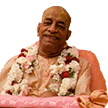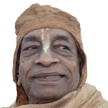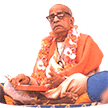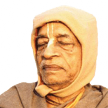Rudra - a glorious personality: Difference between revisions
(Created page with "Category:Glorious Personalities Category:Glorious Personalities from Bhagavad Gita Category:Glorious Personalities from Srimad Bhagavatam Category:Glorious Perso...") |
No edit summary |
||
| Line 10: | Line 10: | ||
{{Personalitiesnav}} | {{Personalitiesnav}} | ||
<!----------------- BEGIN STANDARD HEADING -----------------> | <!----------------- BEGIN STANDARD HEADING -----------------> | ||
Srila Prabhupada's books, lectures, conversations and letters reveal the qualities of this glorious personality as seen in the Vaniquotes '''[[Vaniquotes:Category: | Srila Prabhupada's books, lectures, conversations and letters reveal the qualities of this glorious personality as seen in the Vaniquotes '''[[Vaniquotes:Category:Rudra|Rudra]]''' category. An introduction from his teachings is given below in the following 8 quotes. | ||
<!----------------- END STANDARD HEADING -----------------> | <!----------------- END STANDARD HEADING -----------------> | ||
---- | ---- | ||
== Quotes from Srila Prabhupada's teachings == | == Quotes from Srila Prabhupada's teachings == | ||
<!----------------- edit quote boxes below this line -----------------> | <!----------------- edit quote boxes below this line -----------------> | ||
{{VaniQuotebox| | {{VaniQuotebox|Although Brahma tried to curb his anger, he could not do so, even though he is the supreme being. Such anger in its true color came from between the eyebrows of Brahma as Rudra, in a mixed color of blue (ignorance) and red (passion)|The face of anger is the same whether exhibited due to ignorance or knowledge. Although Brahmā tried to curb his anger, he could not do so, even though he is the supreme being. Such anger in its true color came from between the eyebrows of Brahmā as Rudra, in a mixed color of blue (ignorance) and red (passion), because anger is the product of passion and ignorance '''(Śrīmad-Bhāgavatam 3.12.7)'''}} | ||
{{VaniQuotebox| | {{VaniQuotebox|Brahma created Rudra to help him in his creative endeavor, but from the very beginning Rudra began to devour the whole creation, and thus he had to be stopped from such devastating activities|The whole process of the creation, maintenance and dissolution of the cosmic manifestation is meant to give the conditioned souls a chance to go back home, back to Godhead. Brahmā created Rudra to help him in his creative endeavor, but from the very beginning Rudra began to devour the whole creation, and thus he had to be stopped from such devastating activities. '''(Śrīmad-Bhāgavatam 3.12.22)'''}} | ||
{{VaniQuotebox| | {{VaniQuotebox|Brahma, disgusted with the Rudra generations and afraid of being devoured by the increase of population, asked Rudra to stop producing such an unwanted generation and take to penance for attaining the favor of the Supreme Lord|In Bhagavad-gītā it is said that the common mass of people follow the path shown by an authority. Thus Brahmā, disgusted with the Rudra generations and afraid of being devoured by the increase of population, asked Rudra to stop producing such an unwanted generation and take to penance for attaining the favor of the Supreme Lord. '''(Śrīmad-Bhāgavatam 3.12.19)'''}} | ||
{{VaniQuotebox| | {{VaniQuotebox|From Brahma came Sanaka, Sananda, Sanatana and Sanat-kumara, then Rudra, and then the seven sages, and in this way all the brahmanas and ksatriyas are born out of the energy of the Supreme Personality of Godhead|All of them are born of these twenty-five patriarchs. Brahmā underwent penance for one thousand years of the demigods before he realized by the grace of Kṛṣṇa how to create. Then from Brahmā came Sanaka, Sananda, Sanātana and Sanat-kumāra, then Rudra, and then the seven sages, and in this way all the brāhmaṇas and kṣatriyas are born out of the energy of the Supreme Personality of Godhead. Brahmā is known as Pitāmaha, the grandfather, and Kṛṣṇa is known as Prapitāmaha, the father of the grandfather. '''(Bhagavad-gītā 10.6)'''}} | ||
{{VaniQuotebox| | {{VaniQuotebox|In Bhagavad-gita the principle of Rudra is described|The creation of Rudra from between the eyebrows of Brahmā as the result of his anger, generated from the mode of passion partly touched by ignorance, is very significant. In Bhagavad-gītā (3.37) the principle of Rudra is described. Krodha (anger) is the product of kāma (lust), which is the result of the mode of passion. '''(Śrīmad-Bhāgavatam 3.12.11)'''}} | ||
{{VaniQuotebox| | {{VaniQuotebox|Incarnations like Brahma, Rudra, Manu, Prthu and Vyasa are His material qualitative incarnations, but His incarnations like Rama, Narasimha, Varaha and Vamana are His transcendental incarnations|As the supreme controller of both the material and spiritual worlds, the Lord has different incarnations of unlimited categories. Incarnations like Brahmā, Rudra, Manu, Pṛthu and Vyāsa are His material qualitative incarnations, but His incarnations like Rāma, Narasiṁha, Varāha and Vāmana are His transcendental incarnations. Lord Śrī Kṛṣṇa is the fountainhead of all incarnations, and He is therefore the cause of all causes. '''(Śrīmad-Bhāgavatam 1.1.17)'''}} | ||
{{VaniQuotebox| | {{VaniQuotebox|Indirectly, the sons and followers of Rudra are advised to stop the business of annihilation, following the Rudra principle while the peaceful creation of Brahma is going on|Brahmā, disgusted with the Rudra generations and afraid of being devoured by the increase of population, asked Rudra to stop producing such an unwanted generation and take to penance for attaining the favor of the Supreme Lord. We find, therefore, in pictures, that Rudra is always sitting in meditation for the attainment of the favor of the Lord. Indirectly, the sons and followers of Rudra are advised to stop the business of annihilation, following the Rudra principle while the peaceful creation of Brahmā is going on. '''(Śrīmad-Bhāgavatam 3.12.19)'''}} | ||
{{VaniQuotebox| | {{VaniQuotebox|It is stated there (Mrtyunjaya-tantra) that the highest planetary system within the material world is Satyaloka, or Brahmaloka, beyond which are Rudraloka and Maha-Visnuloka|It is stated there that the highest planetary system within the material world is Satyaloka, or Brahmaloka, beyond which are Rudraloka and Mahā-Viṣṇuloka. Regarding this Mahā-Viṣṇuloka, it is stated in the Brahma-saṁhitā, yaḥ kāraṇārṇava-jale bhajati sma yoga-nidrām ananta-jagad-aṇḍa-sa-roma-kūpaḥ: (Bs. 5.47) "Lord Mahā-Viṣṇu is lying in the Kāraṇa Ocean. When He exhales, innumerable universes come into existence, and when He inhales, innumerable universes enter within Him." '''(Kṛṣṇa Book, Chapter 89)'''}} | ||
<!----------------- edit quote boxes above this line -----------------> | <!----------------- edit quote boxes above this line -----------------> | ||
''' | '''Rudra - [[Vaniquotes:Category:Rudra|explore more within this category]]'''. | ||
{{GloriousPersonalitiesTotal}} | {{GloriousPersonalitiesTotal}} | ||
Latest revision as of 05:41, 21 December 2016
INTRODUCTION TEXT TO BE WRITTEN
Srila Prabhupada's books, lectures, conversations and letters reveal the qualities of this glorious personality as seen in the Vaniquotes Rudra category. An introduction from his teachings is given below in the following 8 quotes.
Quotes from Srila Prabhupada's teachings
Rudra - explore more within this category.
Vanipedia has now over 215 introductory articles compiled from Srila Prabhupada's teachings under the series titled Glorious Personalities. All these articles can be seen in the Table of Content on the right side of this article and also here in this Umbrella Category. Browse through them to relish the breadth and depth of Srila Prabhupada's teachings - There is an attractive personality for everyone.





